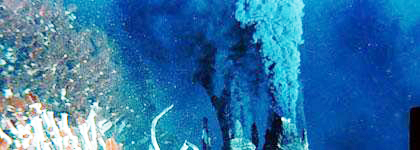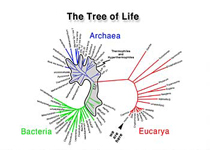   |
||
 |
Energy and Sex at the
|
Season Tickets for this event are available at 503-819-8365 or online here! |
"The transition to complex life hinged on a unique endosymbiotic, bioenergetic jump, rather than on natural selection acting on mutations accumulated gradually among physically isolated prokaryotes." |
||
William Born in Bethesda, Maryland, Martin was educated at Richland College, Dallas, Texas, and Texas A&M University. After working as a carpenter in Dallas, Martin moved to Hannover, Germany, and obtained his university Diploma from Technische Universität Hannover in 1985. Martin's PhD is from Max-Planck-Institut für Züchtungsforschung, Cologne, where he did postdoctoral research, followed by further postdoctoral work at Institut für Genetik, Technische Universität Braunschweig, where he obtained his Habilitation in 1992. In 1999, Martin became full (C4) professor at Universitaet Düsseldorf. Martin is a distinguished and sometimes controversial contributor to the field of molecular evolution. He is known particularly for his work on the evolution of the Calvin cycle and plastids including chloroplasts, and, more generally, for contributions to understanding the origin and evolution of eukaryotic cells. Martin is co-author, with Miklos Mueller of Rockefeller University, of the 1998 paper The Hydrogen hypothesis for the first eukaryote. A wealth of subsequent research papers include contributions, independently and with Michael J. Russell of the NASA Jet Propulsion Laboratory, to understanding the geochemical origins of cells and their biochemical pathways. |
How and where did the first cells arise? How did they live? What did they live from? How did cells ultimately become complex? And what does sex have to do with the origin of eukaryotes? Those are a lot of questions. They are hard questions, on topics of general interest. Someday we will have the answers. Do we have some answers already? It could be. On the evening of May 4, let’s explore early evolution from the standpoint of physiology and genomes. "The conversion from endosymbiont to mitochondrion provided a freely expandable surface area of internal bioenergetic membranes, serviced by thousands of tiny specialized genomes that permitted their host to evolve, explore and express massive numbers of new proteins in combinations and at levels energetically unatainable for its prokaryotic contemporaries. IF EVOLUTION WORKS LIKE A TINKERER, EVOLUTION WITH MITOCHONDRIA WORKS LIKE A CORP OF ENGINEERS." "Although conventional wisdom holds that the origin of complexity was key to the acquisition of mitochondria, the energetics of genome expression polarize this major evolutionary transition to the contrary: mitochrondria are prerequisite to complexity." Lane, Nick and William Martin, "The energetics of genome complexity", Nature, vol 467, 930-934 (2010) |
|